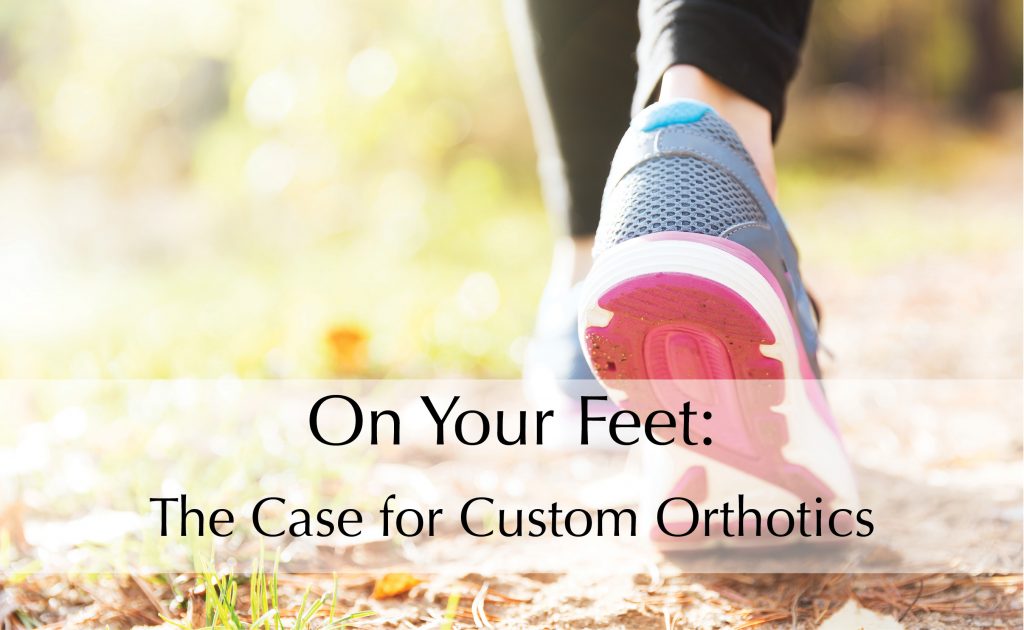May is foot health month and we’re shouting it from the rooftops. As you lace up and get outside, start slowly and build your endurance in gradual increments.
Reports say that 8 in 10 adults have experienced foot pain in their lives. Close to half have admitted they have done nothing about it and just lived with the pain.
Walking is popular
There’s no doubt about it, walking is enjoyable and many of us incorporate it into our schedules. In fact, 69% of Canadians rank it as one of their most popular activities.
When you walk, your feet hit the ground more than 650 times each kilometer. Every time that happens our feet absorb the impact.
What about orthotics?
You may not realize it, but a sore hip or tense low back could have something to do with your feet.
In Understanding Orthotics, the Canadian Chiropractic Association (CCA) says that foot pain and strain symptoms can present themselves as pain in the ankles, knees, hips or low back.
Orthotics are different from over the counter in soles in that they are specifically designed to fit your foot. These pad-like devices are placed inside your shoe and worn in place of the manufacturer’s in sole.
According to PainScience.com, there are four common conditions where orthotics are often be prescribed:
- Plantar fasciitis
- Arthritis
- Diabetes
- Metatarsalgia
Functional orthotics are typically made of semi-rigid materials like graphite or hard plastic. They are used to treat foot pain caused by abnormal motion. The can also be prescribed for injuries like shin splints or tendinitis.
For a softer cushiony support, accommodative orthotics may be used. Patients with uncomfortable conditions such as calluses on the bottom of the foot may benefit from this style of orthotic.
Orthotics for walking
Each foot is unique. A high or low arch will determine how the foot absorbs the impact of each step.
With a high arch, or cavus foot, the foot does not flatten and so it absorbs shock poorly. An orthotic can be used to even out the foot’s contact with the ground and aide in distributing the weight evenly across the entire foot.
When the arch flattens too much, we get a condition known as flatfeet. In this instance, the foot is unstable and unable to maintain a proper arch. Over time, this imbalance can cause misaligned bones throughout the foot. Orthotics can be designed to distribute the weight more laterally over the foot.
Our chiropractors can perform a gait analysis and other tests to determine which style of orthotic is right for you. Our foot care specialist can remove painful corns or calluses and have you walking the track again in no time.
The power of stretching
Stretching is perhaps one of the best prevention techniques for foot pain and strain. You can do your part to avoid problems before they occur. Try the Achilles stretch the next time you sit down:
While sitting on a chair, plant your heel and gently pull your toes up and toward you. Stretch as far back as you comfortably can, and hold for five seconds. Relax the foot and repeat on the other side. You can perform this several times on each foot.
For more on how to stretch your feet check out this WebMD video.
Start your journey towards healthy feet today and let us know how you feel. It’s so important to protect the foundation of our healthy bodies –our feet!
